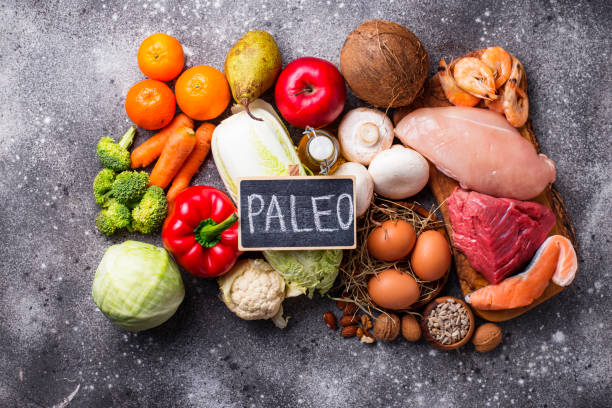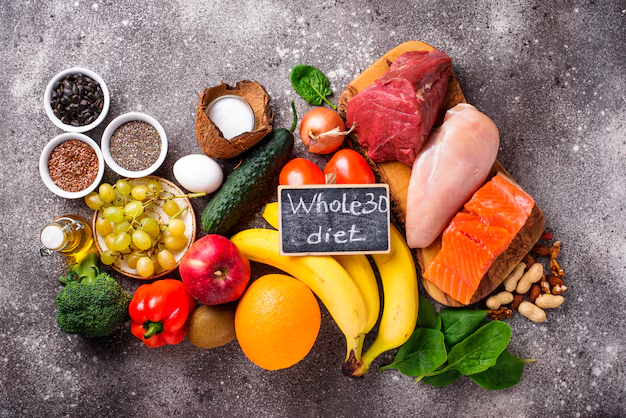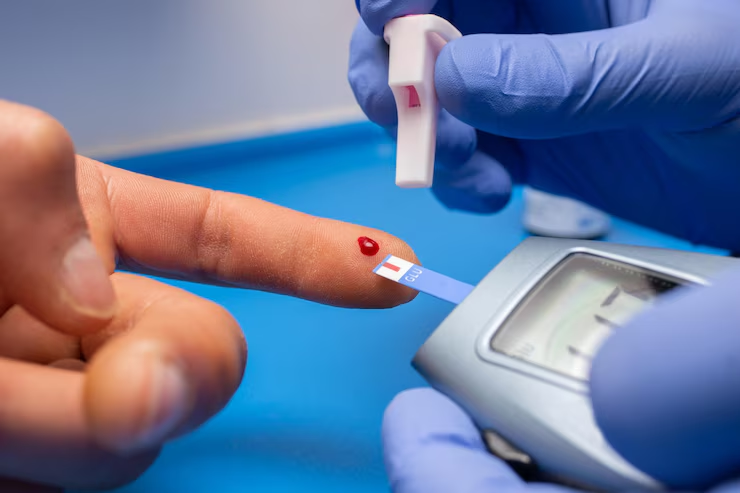Living with diabetes means making smart food choices that help manage blood sugar, boost energy, and support overall health. Whether you’re dealing with type 1, type 2, or prediabetes, what you eat plays a major role in how you feel every day and in your long-term well-being.
The good news is, having diabetes doesn’t mean you have to give up delicious meals or feel limited in your options. With the right diet, you can maintain stable blood sugar levels, lower the risk of complications, and even enhance your quality of life. A balanced approach to eating can lead to greater control and confidence in managing your condition.
In this guide, we’ll cover the 8 best diets for people with diabetes. These plans are backed by research and aim to provide the right mix of nutrients while supporting your personal lifestyle. We’ll explain how each diet works, its key benefits, and simple steps to help you get started on the path to healthier eating.
Understanding Diabetes and the Role of Diet
Before jumping into diet plans, it’s essential to understand how diabetes affects your body and why diet matters so much.
Diabetes is a chronic condition characterized by elevated blood sugar (glucose) levels. This happens because the body either doesn’t produce enough insulin (type 1 diabetes) or the cells become resistant to insulin (type 2 diabetes). Insulin is the hormone that helps glucose enter cells to be used as energy.
When blood sugar levels remain high over time, it can damage nerves, blood vessels, and organs, leading to complications like heart disease, kidney problems, vision loss, and more.

Why diet is key:
Regulates blood sugar: Food directly influences blood glucose spikes or drops.
Supports weight management: Maintaining a healthy weight helps insulin function better.
Improves heart health: Many diabetics face increased cardiovascular risk.
Prevents complications: Balanced eating supports overall body health.
A diabetic diet isn’t about deprivation; it’s about smart choices — choosing foods that release energy slowly, provide fiber, and nourish your body without causing sharp sugar spikes.
The Top Best Diets for Diabetics
Each person’s diabetes journey is unique, so there isn’t a one-size-fits-all diet. However, research supports certain dietary patterns that consistently help control blood sugar and improve health outcomes for diabetics.
Mediterranean Diet

The Mediterranean diet is widely recognized as one of the best diet for diabetics due to its focus on natural, wholesome foods. This eating style is inspired by the traditional cuisines of countries along the Mediterranean Sea, including Greece, Italy, and Spain.
At its core, the diet emphasizes plenty of fresh vegetables, fruits, whole grains, legumes, and nuts. It also encourages healthy fats like olive oil and lean proteins such as fish and poultry. Red meat and processed foods are limited, making it a heart-healthy choice.
For individuals with diabetes, this diet helps stabilize blood sugar levels, improve insulin sensitivity, and reduce the risk of complications. Its flexible and enjoyable approach makes it easy to stick with long-term. Overall, the Mediterranean diet isn’t just delicious—it’s a sustainable and effective way to support better health, making it a top choice among the best diet for diabetics.
Key Components:
Fruits, vegetables, legumes, and whole grains
Healthy fats from olive oil and nuts
Moderate fish and poultry intake
Limited red meat and processed foods
Moderate wine consumption (optional)
Why it works for diabetics:
High in fiber slows glucose absorption.
Healthy fats improve insulin sensitivity.
Rich in antioxidants reduces inflammation and oxidative stress.
Helps with weight control and cardiovascular health.
Tips to follow:
Replace butter with olive oil.
Enjoy fish like salmon or sardines twice a week.
Snack on nuts instead of processed foods.
Fill half your plate with colorful vegetables.
Low-Carbohydrate Diet
Low-carb diets are often considered among the best diet for diabetics because they help manage blood sugar levels more effectively. By limiting carbohydrate intake, these diets reduce the chances of sudden spikes in blood glucose, which is essential for diabetes control.
This approach encourages eating more proteins, healthy fats, and low-carb vegetables while cutting back on foods like bread, pasta, rice, and sugary snacks. With fewer carbs to process, the body requires less insulin, which can improve overall insulin sensitivity and reduce dependency on medication.
Many people with type 2 diabetes find that a low-carb lifestyle not only helps with blood sugar control but also supports weight loss and energy balance. When followed properly, this diet can lead to lasting improvements in health, making it a strong contender for the best diet for diabetics looking for better glucose control and long-term results.
Typical carb intake: Usually under 50-130 grams per day, depending on the specific plan.
Types:
Ketogenic diet (very low-carb, high fat)
Moderate low-carb (balanced protein and fats)
Why it works for diabetics:
Lower carbs mean fewer blood sugar spikes.
Can lead to weight loss and improved insulin sensitivity.
Often reduces the need for diabetes medication.
Tips to follow:
Focus on non-starchy vegetables.
Avoid sugary snacks, breads, and pastas.
Include healthy fats like avocado, nuts, and olive oil.
Monitor blood sugar closely when adjusting carbs.
DASH Diet (Dietary Approaches to Stop Hypertension)

The DASH (Dietary Approaches to Stop Hypertension) diet was originally created to help lower high blood pressure, but it’s also considered one of the best diet for diabetics. This plan focuses on nutrient-rich foods that support heart health and stable blood sugar levels.
It encourages the intake of fruits, vegetables, whole grains, lean proteins, and low-fat dairy while limiting sodium, added sugars, and unhealthy fats. By following the DASH diet, people with diabetes can benefit from improved blood pressure, better cholesterol levels, and more balanced glucose control.
Because it’s based on whole, unprocessed foods and proper portion sizes, the DASH diet is both manageable and effective. Its balanced approach makes it an excellent long-term option for managing diabetes, supporting overall health, and reducing the risk of complications. That’s why it’s often recommended as one of the best diet for diabetics seeking a sustainable eating plan.
Key Components:
Fruits, vegetables, whole grains
Lean proteins like chicken, fish, beans
Low-fat dairy
Nuts and seeds
Limited sweets and red meats
Why it works for diabetics:
Rich in potassium, magnesium, and fiber to help regulate blood sugar.
Controls blood pressure — a common concern for diabetics.
Encourages balanced eating without extreme restrictions.
Tips to follow:
Use herbs and spices instead of salt.
Eat a variety of fresh produce daily.
Choose whole grain bread and cereals.
Limit processed and fried foods.
Plant-Based Diet
Plant-based diets focus on eating mostly or entirely foods that come from plants, such as vegetables, fruits, legumes, nuts, seeds, and whole grains. These foods are naturally rich in fiber, vitamins, and antioxidants, which are all important for managing diabetes and overall health.
By limiting or avoiding animal products, plant-based diets help reduce saturated fat intake and support better heart health—something especially important for those with diabetes. The high fiber content also slows down sugar absorption, helping to keep blood glucose levels steady throughout the day.
Many health experts consider plant-based eating as the best diet for diabetics because it supports weight management, improves insulin sensitivity, and lowers the risk of complications. Whether you’re going fully vegan or simply cutting back on meat, adding more plant foods can make a big difference in your blood sugar control and overall well-being.
Types:
Vegetarian (includes dairy and eggs)
Vegan (excludes all animal products)
Flexitarian (mostly plants, occasional meat)
Why it works for diabetics:
High fiber content slows glucose absorption.
Naturally low in saturated fat improves insulin sensitivity.
Often leads to weight loss and improved heart health.
Tips to follow:
Include a variety of beans and lentils for protein.
Experiment with tofu, tempeh, or plant-based meat alternatives.
Be mindful of vitamin B12 and iron intake.
Choose whole, minimally processed plant foods.

Glycemic Index (GI) Diet
The glycemic index (GI) diet ranks carbohydrates based on how quickly they raise blood sugar after eating. It’s a helpful tool for people with diabetes, as it guides them toward making smarter food choices that lead to more stable glucose levels.
This diet encourages eating low-GI foods such as whole grains, legumes, non-starchy vegetables, and certain fruits, which are digested slowly and help prevent sharp spikes in blood sugar. High-GI foods like white bread, sugary snacks, and processed cereals are limited to maintain better control.
Because it directly targets blood sugar management, the glycemic index diet is considered one of the best diet for diabetics. It promotes long-term health by improving insulin sensitivity and reducing the risk of complications. With a bit of planning, it’s a practical and effective way to take charge of your diet and manage diabetes more confidently.
Examples:
Low GI: whole oats, lentils, beans, most fruits, non-starchy vegetables
High GI: white bread, white rice, potatoes, sugary cereals
Why it works for diabetics:
Prevents rapid glucose surges.
Supports steady energy levels.
Can improve blood sugar control and HbA1c levels.
Tips to follow:
Opt for whole grains instead of refined carbs.
Pair carbs with protein or fat to lower GI impact.
Choose fresh fruits over fruit juices or dried fruits.
Limit processed snacks and sweets.
Paleo Diet
The paleo diet is based on the eating habits of ancient hunter-gatherers, emphasizing whole, unprocessed foods. It includes lean meats, fish, fruits, vegetables, nuts, and seeds while cutting out processed foods, grains, legumes, and dairy.
By eliminating refined sugars and grains, the paleo diet may help improve blood sugar levels and support weight loss—two key factors in diabetes management. Many of its core foods have a low glycemic impact, which helps prevent spikes in blood glucose.
Though it may require more planning, the paleo diet is often considered one of the best diet for diabetics who want to eat clean and reduce inflammation. Its focus on natural foods can lead to better energy, improved metabolism, and greater overall health. For those willing to adapt, it offers a powerful way to support blood sugar control through nutrient-rich eating.
Key Components:
Lean meats, fish, eggs
Vegetables and fruits
Nuts and seeds
Healthy fats like olive oil and avocado
Why it works for diabetics:
Eliminates refined carbs and sugars.
Encourages nutrient-dense, whole foods.
May improve insulin sensitivity and reduce inflammation.

Tips to follow:
Avoid processed and packaged foods.
Choose grass-fed or wild-caught proteins when possible.
Incorporate plenty of non-starchy vegetables.
Watch portions of nuts and fruits for carb content.
Vegetarian Diet
A vegetarian diet excludes meat and fish but usually includes dairy products and eggs, making it a flexible, plant-focused eating style. It emphasizes whole foods like vegetables, fruits, legumes, whole grains, nuts, and seeds while still offering varied protein options.
This type of diet is rich in fiber, antioxidants, and essential nutrients, which can help regulate blood sugar levels and improve heart health. The high fiber content slows digestion, helping prevent sudden spikes in blood glucose after meals.
For people managing diabetes, a vegetarian diet can be one of the best diet for diabetics. It supports weight control, reduces the risk of complications, and promotes better insulin sensitivity. With careful planning to ensure balanced nutrition, it offers a healthy, sustainable way to improve blood sugar control and overall well-being while enjoying a wide variety of flavorful foods.
Why it works for diabetics:
High in fiber and antioxidants.
Low in saturated fat.
Supports healthy weight and blood sugar control.
Tips to follow:
Include a variety of protein sources like beans, lentils, eggs, and dairy.
Balance meals with complex carbs and healthy fats.
Limit processed vegetarian foods high in carbs or sugars.
Monitor vitamin B12 and iron levels.
Whole30 Diet

Whole30 is a 30-day elimination diet that emphasizes eating whole, unprocessed foods while removing sugar, grains, dairy, legumes, and artificial additives. The goal is to reset your body and identify how certain foods affect your energy, digestion, and blood sugar.
During this plan, you focus on eating vegetables, fruits, lean proteins, and healthy fats. By eliminating common inflammatory and high-carb foods, Whole30 may help improve insulin sensitivity and support better blood sugar control in the short term.
Although it’s more restrictive than other plans, some consider Whole30 as one of the best diet for diabetics who want a short-term reset or to identify food sensitivities. It encourages clean eating and greater awareness of how your diet impacts your health. After 30 days, foods are slowly reintroduced, helping individuals make more informed choices for long-term diabetes management.
Why it works for diabetics:
Removes processed foods and added sugars that spike blood sugar.
Encourages nutrient-dense, balanced meals.
Can help identify food sensitivities impacting blood sugar or inflammation.
Tips to follow:
Plan meals around vegetables, lean protein, and healthy fats.
Avoid temptation of processed snacks and sweets.
Reintroduce foods slowly after 30 days, observing blood sugar effects.
Consult with healthcare before starting to ensure safety.
Additional Tips for Diabetic Diet Success
Regardless of which diet you choose, here are some general tips to manage diabetes effectively through nutrition:
Practice Portion Control: Managing how much you eat is just as important as choosing the right foods. Overeating, even healthy options, can lead to blood sugar fluctuations. Using smaller plates, measuring out servings, and avoiding oversized portions can help you stay within your nutritional goals. This mindful eating approach supports one of the best diet for diabetics by preventing unnecessary spikes in glucose levels.
Stick to Regular Meal Times: Eating meals and snacks at the same times each day helps regulate your body’s insulin response and maintain steady blood sugar levels. Irregular eating patterns can lead to unpredictable highs and lows, which are especially challenging for people with diabetes. Following a structured meal schedule is a key habit when following the best diet for diabetics.
Stay Well Hydrated: Drinking enough water is essential for overall health and optimal blood sugar management. Hydration helps your kidneys flush out excess glucose through urine. Replacing sugary drinks with water and limiting intake of caffeine and alcohol can support the goals of the best diet for diabetics by preventing dehydration and avoiding hidden sugar sources.
Read Food Labels Carefully: Understanding nutrition labels is vital for managing diabetes effectively. Check for total carbohydrates, added sugars, fiber, and serving sizes. Avoid products with added sugars or high-glycemic ingredients. Being label-savvy helps you stay aligned with the best diet for diabetics and make informed food choices that support balanced blood sugar levels.
Focus on Balanced Macronutrients: Combining carbohydrates with protein and healthy fats slows digestion and results in a more gradual release of glucose into the bloodstream. This balance reduces post-meal blood sugar spikes and keeps you fuller for longer. A diet rich in balanced macronutrients is often part of the best diet for diabetics.
Minimize Processed and Refined Foods: Highly processed foods—such as fast food, sugary snacks, and packaged items—often contain unhealthy fats, added sugars, and refined carbohydrates that can quickly raise blood sugar. Choosing whole, unprocessed foods like vegetables, lean proteins, and whole grains forms the foundation of the best diet for diabetics, promoting long-term health and stable glucose control.
Conclusion

Managing diabetes is a lifelong commitment, but your diet plays a key role in helping you take charge of your health. The best diet for diabetics is one that not only controls blood sugar but is also enjoyable, easy to follow, and fits seamlessly into your daily routine.
Whether you choose the heart-smart Mediterranean diet, a low-carb eating plan, a plant-based approach, or another well-researched option, success comes from consistency and balance. These diets emphasize whole foods, fiber, healthy fats, and lean proteins—all of which help stabilize glucose levels and support overall wellness.
To get the most out of your diet, work closely with your healthcare providers, especially a registered dietitian, to personalize your plan based on your lifestyle and medical needs. Keep track of your blood sugar, stay physically active, and focus on building lasting, healthy habits. With the best diet for diabetics, you can boost your energy, reduce the risk of complications, and enjoy a healthier, more vibrant life.
FAQs
What is the best diet for controlling blood sugar in diabetes ?
There isn’t one single best diet for everyone, but many experts recommend the Mediterranean, low-carb, or DASH diet. These focus on whole foods, healthy fats, lean proteins, and fiber, which help stabilize blood sugar.
Can people with diabetes eat carbohydrates ?
Yes, but in moderation. Choose complex carbs like whole grains, legumes, and vegetables over refined ones like white bread or sugary snacks. These release sugar more slowly and help prevent spikes.
Is it safe to follow a low-carb or keto diet with diabetes ?
Low-carb diets can be safe and helpful, especially for type 2 diabetes. However, it’s important to monitor blood sugar closely and consult a healthcare provider before making big changes.
How often should someone with diabetes eat ?
Eating regular meals and snacks at consistent times can help control blood sugar. Many people benefit from 3 balanced meals and 1–2 healthy snacks daily.
Can a diabetic diet help reduce the need for medication ?
In many cases, yes. A healthy diet combined with exercise and weight management can improve insulin sensitivity, which may reduce the need for medication—especially in type 2 diabetes.


